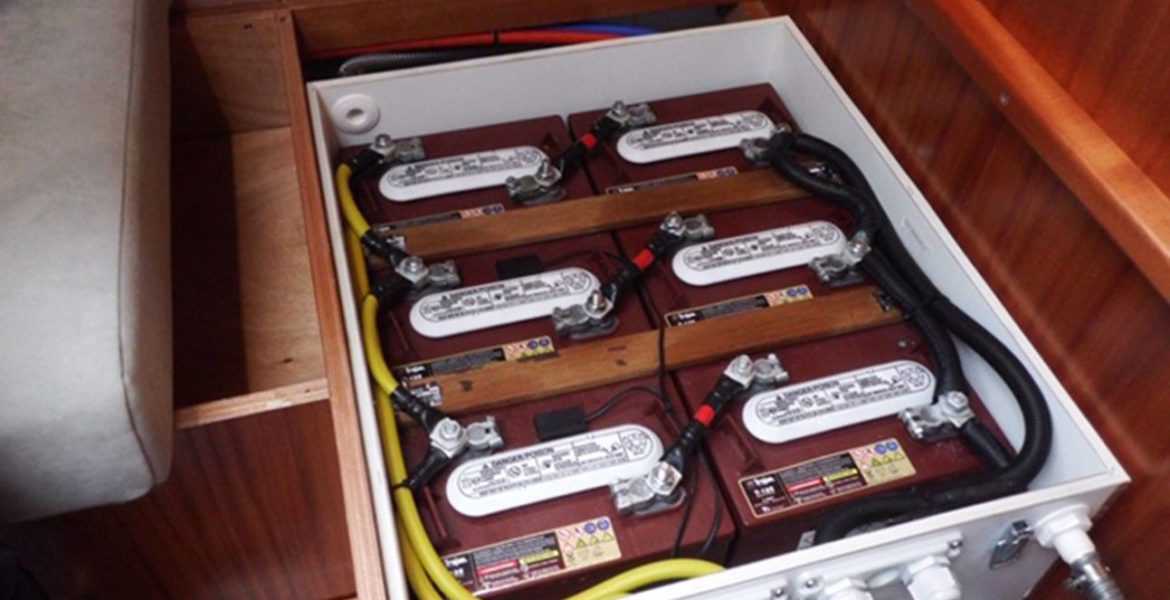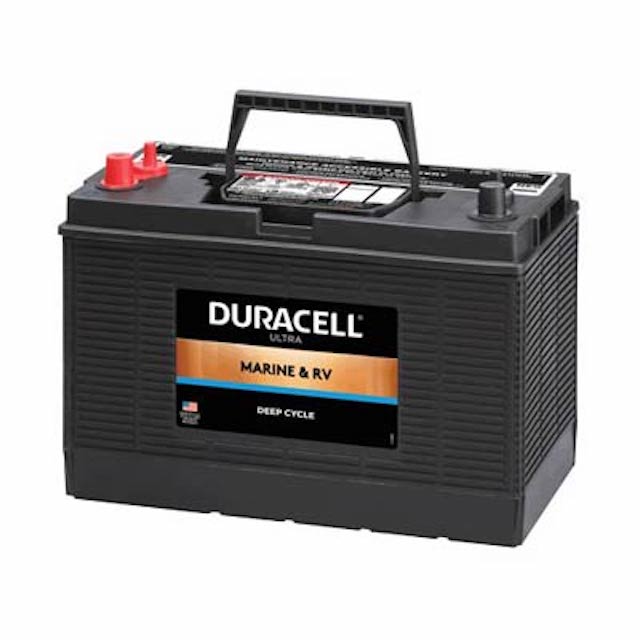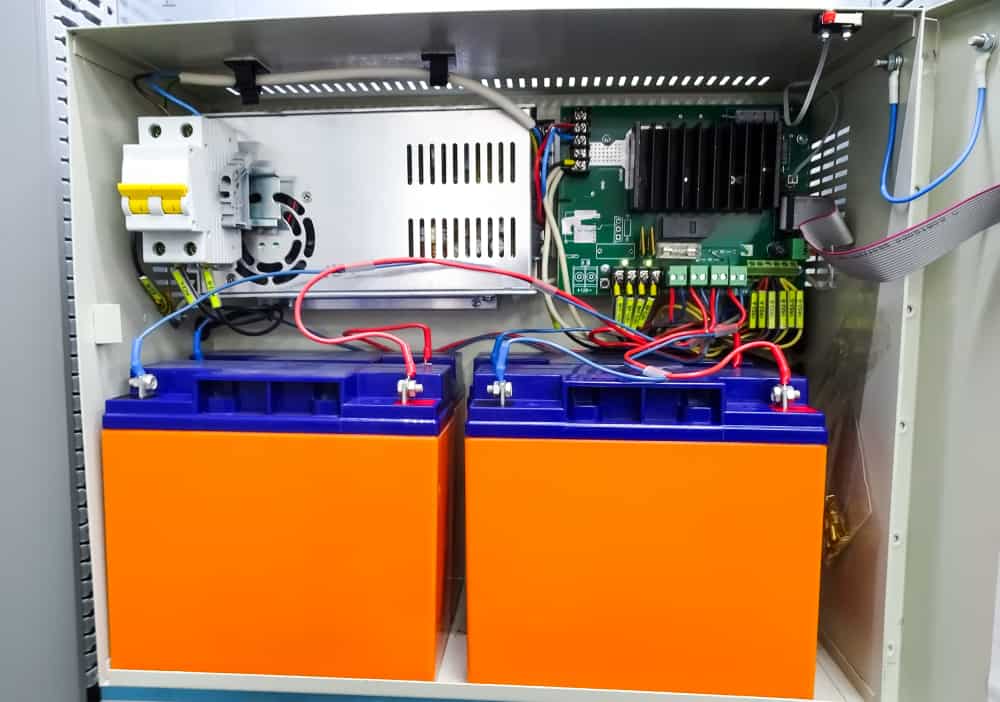Ask Andrew: Boat Electricity - A Look Inside

I’m on many different types of boats, with many configurations. Some have a single ‘automotive-type’ battery on board. Others have shore power, coupled with multiple battery banks, generators and inverters. Often the complexity of the systems, dictates the type of power needed to support them.
But there are always tricky questions when it comes to older boats that have passed on to new owners. Sometimes I scratch my head and think, “Why did they do it this way? What was the purpose?”
I’m asked this question most when it comes to batteries and electrical panels.
Lets start with a quick breakdown of the two types of power commonly found aboard:
1) DC (Direct current) – supplied by a battery or batteries
2) AC (Alternating current) – supplied by shore power, a generator or an inverter.
Smaller appliances such as lights, VHF radio, and engine key switch, are all powered by on-board batteries, using DC voltage. As the batteries are depleted, something need to work to charge them back up again so that they can continually be used: a running engine, or a battery charger does the trick in most cases.
AC appliances are often bigger and more complex: plugs/outlets (like the ones found in a home), larger refrigerators, battery chargers, air conditioners all require AC power at 110 Volts. This is most often supplied by plugging the boat into shore power at dock. In a simple set-up, this also means that the AC appliances and outlets wont function when the boat is away from dock.

On more advanced (read: expensive) boats, this problem is solved by adding a generator or an inverter. A generator is an engine whose purpose is to create AC power: While it runs, outlets and other AC appliances (including the battery charger) can work. An inverter takes battery power (often at 12 volts) and converts (actually ‘inverts’) the voltage to 110V.
Keep in mind: The appliances require either DC or AC. When the boat is plugged into shore power, the DC appliances are still drawing voltage from the batteries. You may not realize it, though, because the AC shore power is running a battery charger at a faster rate than the DC voltage is being used.
There are two emerging trends in marine power that hold some advantages that should be considered when reconfiguring or designing and electrical system:
CAUTION - boat electrical systems can deliver shocks that can cause significant harm and damage. Take proper precautions and or get professional advice when working on your systems.

A single 12-volt battery doesn’t last terribly long. Many of us know that if a light is left on in our car overnight, the following morning, the car may not have enough voltage to start. Similarly, a light or a pump left on during the week can deplete the single 12-volt battery by the following weekend.
In order to solve the demand for more power, batteries can be combined.
Combining two batteries in parallel means that the amount of power available will be doubled – it will last twice as long, or power something twice as big (more amperage, but the same voltage. If you compare this to a household sink or shower: twice as much hot water at the same water pressure)
Combining two batteries in series means that the total voltage will be doubled, but the amperage will remain the same (Using the same shower example: the same amount of hot water, but double the water pressure).

In the first example, by adding more batteries in parallel, we have more total power to draw upon: A single light bulb may last 10 hours on a single battery. By adding an additional (or two, or more) battery, we can prolong the time that that light will stay on.
In the second example, batteries are placed in series. It is becoming more common to see two, 6-volt batteries connected in series, to yield 12 volts output. There are two main advantages to using two 6-volt batteries vs one 12V battery:
• 6 Volt batteries have thicker, heavier plates in their construction – meaning that they are more capable of charging and discharging for longer periods of time than a 12-volt battery. When used as deep-cycle (house) batteries on a boat, they can last from 4-8 years
• 2, 6-volt batteries can weigh less than a single 12-volt battery. They are smaller in size, and therefore can fit in tighter spaces than their 12-volt counterparts. When weight and space is an issue, 6-volt batteries can help
Stepping up to a 24V System
Taking the series concept further – a newer concept in North American boats is the use of 24Volt systems – with 12-volt batteries connected in series. Some electrical panels are arranged to provide certain appliances with 110v AC, 12V DC and 24V DC. Again, there are a few advantages to adding in 24V DC power:

1) By increasing the voltage running through the system, the current (amperage) running through the wiring is reduced significantly. This means that smaller gauge wiring can be used, reducing wiring costs, and weight aboard
2) 24 volts can be more compatible with AC systems, which makes it ideal for use in applications where inverters are used.
3) Less voltage drop – which is especially beneficial when sensitive electronic equipment is being used
4) Reduced fire risk and electrical safety due to a lower current running through the system.
5) Appliances drawing high amperage loads (windlasses, bow thrusters, electric motors, refrigeration) are all readily available at 24 (and even 48 V) ratings.
6) Because AC systems are more compatible with higher voltage DC systems, Renewable power – solar and wind – can be captured with less loss.
Note: in order to step up to a 24V system, the batteries, wiring, appliances and circuit protection all must be pre-planned. Where there are definite advantages in using 24-volt systems aboard, that system needs to be set up correctly and safely.
Whichever system you have (or dream about), be safe by understanding the application any by following manufacturer guidelines. If in doubt, ask a qualified marine professional.